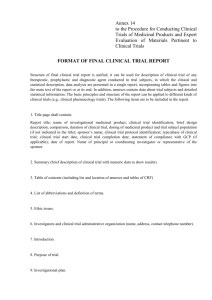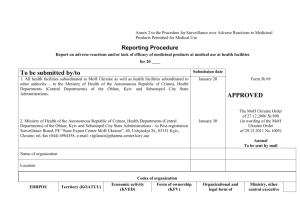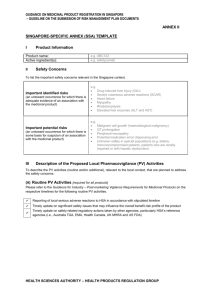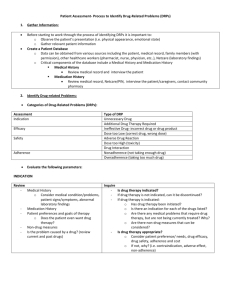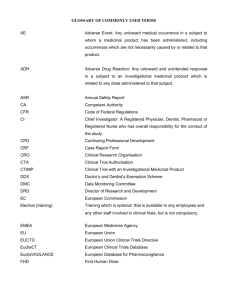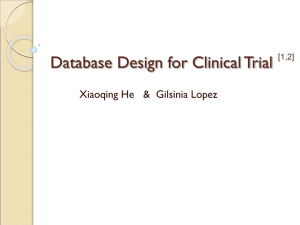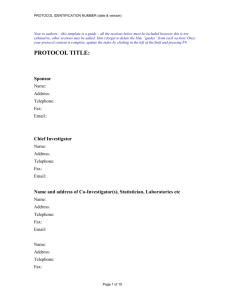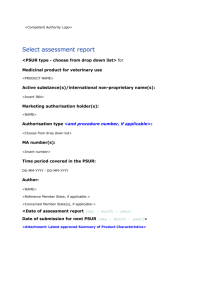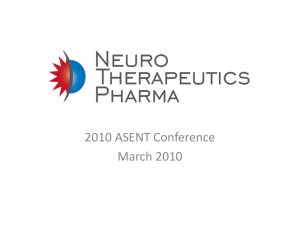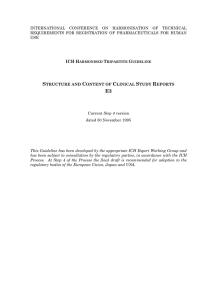66_13
advertisement
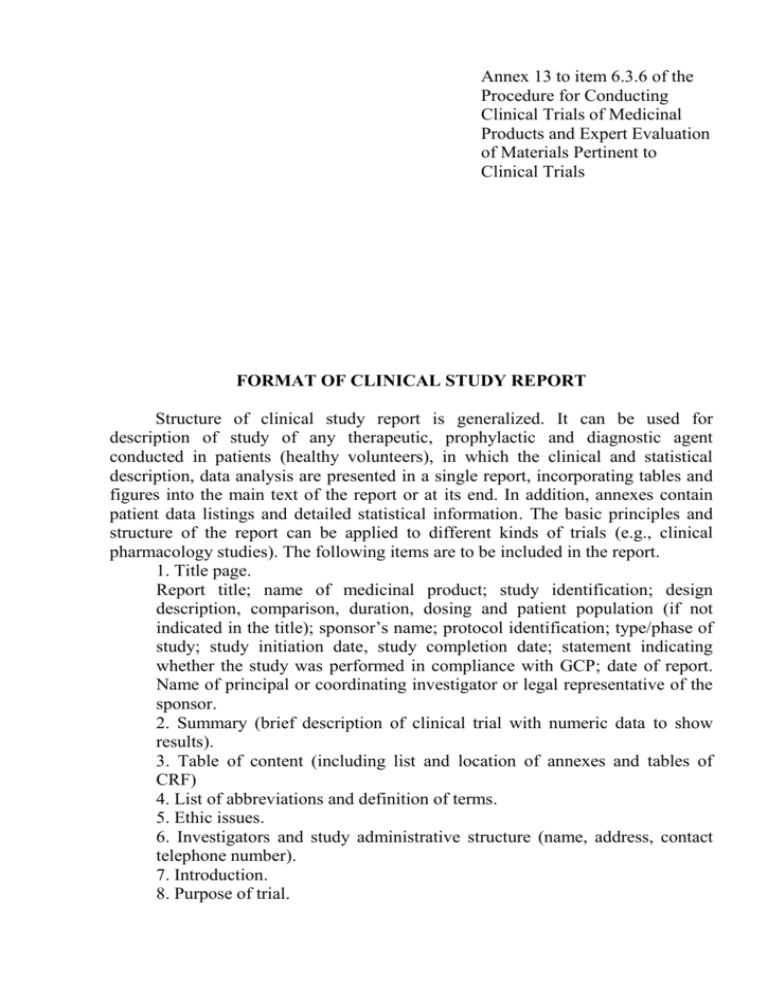
Annex 13 to item 6.3.6 of the Procedure for Conducting Clinical Trials of Medicinal Products and Expert Evaluation of Materials Pertinent to Clinical Trials FORMAT OF CLINICAL STUDY REPORT Structure of clinical study report is generalized. It can be used for description of study of any therapeutic, prophylactic and diagnostic agent conducted in patients (healthy volunteers), in which the clinical and statistical description, data analysis are presented in a single report, incorporating tables and figures into the main text of the report or at its end. In addition, annexes contain patient data listings and detailed statistical information. The basic principles and structure of the report can be applied to different kinds of trials (e.g., clinical pharmacology studies). The following items are to be included in the report. 1. Title page. Report title; name of medicinal product; study identification; design description, comparison, duration, dosing and patient population (if not indicated in the title); sponsor’s name; protocol identification; type/phase of study; study initiation date, study completion date; statement indicating whether the study was performed in compliance with GCP; date of report. Name of principal or coordinating investigator or legal representative of the sponsor. 2. Summary (brief description of clinical trial with numeric data to show results). 3. Table of content (including list and location of annexes and tables of CRF) 4. List of abbreviations and definition of terms. 5. Ethic issues. 6. Investigators and study administrative structure (name, address, contact telephone number). 7. Introduction. 8. Purpose of trial. 2 Continuation of Annex 13 9. Investigational plan. 9.1. Overall study plan (design) and study description plan; a schematic diagram of trial stages and procedures. 9.2. Validation of study plan (design) including choice of control groups. 9.3. Selection of study population: - Inclusion criteria; - Exclusion criteria; - Removal of patients from therapy or assessment. 9.4. Treatment: - treatment prescribed; - identity of investigational products; - methods of assigning patients to treatment groups (randomization); - selection of doses in the study; - selection and timing of doses of medicinal product for each patient; - blinding (if used); - prior and concomitant therapy; - treatment compliance by patients. 9.5. Efficacy and safety information (assessment and schedule for efficacy and safety characterization). 9.6. Data quality assurance (audit certificate, if available). 9.7. Statistical methods specified in the protocol. 9.8. Changes in the planned conduct of the study or planned analyses. 10. Information about study patients. 10.1. Disposition of patients. 10.2. Deviations from protocol. 11. Efficacy evaluation. 11.1. Data sets analyzed. 11.2. Demographic and other baseline characteristics. 11.3. Measures of treatment compliance. 11.4. Efficacy results and tabulations of individual patient data: - analysis of efficacy; - statistical/analytical issues; - tabulation of individual response data of subjects to treatment; - medicinal product dose, medicinal product concentration and relationship to patient response to medicinal product; - drug-drug, drug-disease interactions (if studied); - Efficacy conclusions. 12. Safety evaluation. 12.1. Adverse events: - brief summary of adverse events; - display of adverse reactions; - analysis of adverse events; 3 Continuation of Annex 13 - listing of adverse events in patients. 12.2. Death, other serious adverse events as well as serious adverse reactions. 12.3. Evaluation of clinical laboratory characteristics: - listing of individual laboratory measurements by patients and each abnormal laboratory value; - evaluation of each laboratory value; - laboratory values over the course of study; - individual patient changes; - individual clinically significant abnormalities. 12.4. Parameters of essential functions of organism, data of objective study and other observations related to safety. 12.5. Conclusions regarding safety. 13. Discussions and overall conclusions. 14. Tables, figures and graphs referenced to but not included in the text. 14.1. Demographic data (summary tables and figures). 14.2. Efficacy data (summary tables and figures). 14.3. Safety data (summary tables and figures): - data on adverse events; - listing of serious adverse events; - description of serious adverse events; - abnormal laboratory value listing (each patient). 15. Reference list. 16. Appendices. 16.1. Study information: - protocol and protocol amendments; - template of case report form; - ethics-related pages and Ethics Committee’s opinion, templates of information for patients in written and informed consent form; - list and description of investigators and other responsible officers; - signatures of principal investigator or study director; - analytical documentation – certificates of the quality of investigational product; - randomization scheme and codes (patient identification and treatment assigned); - audit certificates (if available); - documentation of statistical methods; - documents of laboratory standardization of methods and assurance of the quality of procedures, if available; - publications based on trial; - important publications referenced in report. 16.2. Patient data listings: - discontinued patients; 4 Continuation of Annex 13 - protocol deviations; - patients excluded from the efficacy analysis; - demographic data; - compliance with treatment regimen and/or data on concentration of medicinal product (if available); - individual efficacy response data; - adverse events listing (for each patient); - listing of individual laboratory measurements by patient, which are required by the Center. 16.3. Case report forms (hereinafter - CRF): - CRF of death, other serious adverse events and cases of exclusion from investigation because of the development of adverse events; - Other CRF submitted for consideration. 16.4. Listing of each patient data. V.T. Chumak Director, State Pharmacological Center MoH Ukraine
